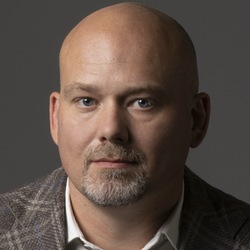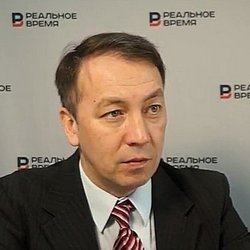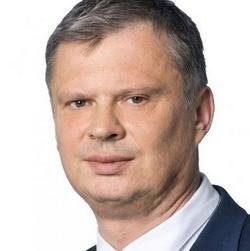Main economic result of 2021 is accelerated inflation
Experts reflect on why inflation grew, how much the dollar will cost in 2022, what’s happening to oil and what people with modest incomes will have to save for
A rapid acceleration of inflation became one of the main results of the year in the Russian economy. For the first time since 2014, food inflation (for some types of products) became two-digit. The upward spiral of inflation turned out a surprise: almost no authoritative economist predicted this before the summer of 2021. As a result, general inflation in the country, according to official data, reached 8,26% by late December (with a 4% target). When will it be possible to curb it? The experts surveyed by Realnoe Vremya agree that it won’t be stopped till the summer of 2022, and by the end of the year it will be possible to take it to 6-7%. Also, we asked them to characterise both the situation with the ruble rate and the oil market.
Year of big inflation
If 2020 goes down in history as the year of the coronavirus epidemic, 2021 does as the year of global inflation. Prices for food and other commodities rose across the globe, and Russia wasn’t an exception. For this reason, economists often started to call inflation an infectious product “imported” from foreign markets. Russian President Vladimir Putin claimed at the annual big press conference that inflation in the country totalled 8% by the end of the year, while it “was 4%.” To be unbiased, he offered to have a look at the USA where inflation was 6,1%, while the target number was 2%. “It is a serious issue,” Vladimir Putin noted.
“This [8% a year] is much, it is above our goal of 4%,” Chairwoman of the Central Bank Elvira Nabiullina had expressed her concern earlier.
An absolutely classic textbook solution became the main instrument in restraining inflation: a tighter monetary policy. In the middle of December, the Central Bank raised the key rate to 8,5%. At the same time, the head of the regulator warned that it wasn’t planned to return to the neutral key rate earlier than 2023.
Whereas prices keep growing. According to the Russian Statistics Service, inflation was 0,26% from 21 to 27 December. Buckwheat, sausages, eggs, butter and flour went up in price the most during this week. Prices for toothpaste, matches, toothbrushes increased among non-food products. Petrol, diesel fuel become expensive (which means logistics also rises, and this will make its contribution to the further price growth on the shelves).
“It seems everybody is trying to earn on the deficit”
Yaroslav Kabakov, strategy director at FINAM GC, hopes that some deceleration of inflation can be expected by the end of the first quarter. He (as well as most of his colleagues) thinks that there are several reasons for the leap of inflation:
“Prices are growing in the USA and Europe, while the Russian market is reacting to imported products. And of course, logistic problems that arose amid coronavirus restrictions make a contribution to the higher price for products. Suppliers are trying to add 5-10% to a product price almost at every transit hub. As a result, a commodity arrives with a 30-50% price growth. In other words, not the prime cost of products but a markup logistics creates is the problem. It seems everybody is trying to earn on the deficit. This disrupts consumers’ trust, on the one hand. On the other hand, there appear opportunities for competition between producers. For instance, China gets an additional market share because it can supply its products for a lower price and a lower markup. In fact, European companies are starting to lose the market. And such abrupt imbalances are happening across the world.”
Why does inflation grow in Russia? The expert reminds us that as inflation grew, the regulator started to tighten the monetary policy trying to smooth the price rise. Yaroslav Kabakov explains the essence of the regulator’s monetary actions — those who create a markup understand that effective demand of the population starts to go down and begin to decrease the profitability of their products. Also, he thinks that additional payouts spurred inflation:

“We started the year with the rate of 74 rubles per dollar and ended it at the same level”
As for the ruble rate against the American and European “colleagues,” here, Yaroslav Kabakov doesn’t see reasons that would bring the national currency down:
“Over the year, the ruble dynamics didn’t change dramatically. We started the year with the rate of 74 rubles per dollar and ended it at the same level. The ruble handled those challenges it met throughout 2021 quite well. The Central Bank managed to regulate the system so that Russian exporters’ revenues, which go to the Russian economy, didn’t cause big shocks in the national currency.”
Of course, geopolitics has a strong impact on the ruble rate, the expert says. But in his opinion, the regulator at the moment knows how to tackle it. Also, the Central Bank managed to make the ruble rate less dependent on oil rates. Yaroslav Kabakov reasons:
“What happened earlier: there is an inflow of revenue from exporters, the rule starts to suddenly get stronger. Oil prices fall, there is a capital outflow. Now the Central Bank managed to stabilise inflows and outflows. As I understand, big businesses are coordinating their actions with the regulator. The economy became more predictable. The ruble-oil ratio gradually debilitates because the predictability of money flows grows. The ruble is now quite stable towards outflows when non-residents withdraw from many Russian assets, while during the previous year outflows could influence the ruble dynamics. This is why one shouldn’t wait for critical shocks. Only sudden geopolitical events can influence the state of affairs.
As for global oil prices, OPEC’s coordinated actions influence them, and there is low production of shale oil in the US, the expert says. These factors push the prices for black gold upward.
“How does all this influence us? On the one hand, the price growth will lead to a rise in export revenue. On the other hand, petrol prices won’t reduce because of this either. The role of the oil and gas sector and state in the economy will grow again. They always benefit from the rise in oil prices — excess profits are invested in huge projects. In any case, we will live better in 2022 given the current wave of omicron and its peculiarities: a lower death rate, shorter hospitalisation. All this inspires hope into us that by summer we will start getting out of all lockdowns and air travel restrictions.”
“We will live with high inflation until summer”
Economist Albert Bikbov thinks that high inflation is now the main risk for the Russian economy. He sees that grown demand for feedstock because of world economies’ attempt to recover after the pandemic-related crisis as the global reason.
For Russia’s economy that suffered from the pandemic quite seriously, a quick rebound to pre-pandemic levels is characterised by the same high demand for feedstock. Demand for feedstock is expanding in all sectors of the economy — and it is expectedly becoming expensive.

As for oil prices, Bikbov thinks that it will stay at the previous level, some $70-75 per barrel. A slight rise in rates is possible at the beginning of the year because of the cold winter in Europe. But in the first quarter, as the economist says, the FRS and European Central Bank will resort to restraining inflation, which will lead to a fall in oil prices to $70 per barrel.
As for the ruble rate in 2022, Albert Bikbov considers that several factors will seriously influence it:
- The US FRS is closing the asset purchase programme as an anti-crisis measure. This means a decrease in the amount of dollars.
- After the closure of the programme, the US FRS will start dealing with the record-high growing inflation by raising interest rates. The task is to take inflation in the US from today’s 6,2% to the comfortable target of 2%. These factors will undoubtedly be in favour of a stronger dollar against other currencies, including the ruble.
- The Russian Central Bank also started to time galloping inflation and recently significantly raised interest rates. But one shouldn’t wait for a stronger ruble unlike the dollar because the budget rule is in force when the currency is purchased and the National Wealth Fund is replenished when the Urals goes above $62,2.
If there isn’t force majeure like the excessively bad epidemiological situation, active military actions and a greater sanction pressure, the dollar rate in 2022 must fluctuate around 75 rubles per dollar, while the euro must be some 85 rubles per euro.
“Middle-class representatives will suffer the most”
Sergey Suverov, an investment strategist of Arikacapital, supposes that inflation will reach its peak in the middle of 2022, after that, it must slow down a bit compared to the high base in 2021. But in 2022 on average he predicts it will decrease to 6-7%.
“This year, food inflation reached two-digit numbers. Due to the high base in 2021, it will decrease. Because of the rise in the key rate, inflation’s pace must get slower. A slower pace of retail lending will cool it down too.”
This expert also mentions imports of products from abroad as one of the reasons for the inflation acceleration in Russia. Also, he says that in Russia there is low competition in the consumer market, there are few goods, there are problems with production. Most industrial companies have low workforce productivity, which envisages a high prime cost of a product. All this is mixed with high inflation expectations, which stir inflation growth.
In the expert’s opinion, the ruble rate depends on geopolitics:

Meanwhile, Suverov and his colleagues forecast that the economic growth in Russia will likely slow down. There was a recovery growth in the country in 2021, but there aren’t any serious drivers for big growth in 2022. In the future, due to the high rates of the regulator, one should expect the economy to decelerate. And the rise in the key rate also hurts the economic growth, that’s why it is expected to be modest, in the region of 2-3%.
“As always, middle-class representatives who will have to save money on goods will suffer the most. Perhaps, stores will start to switch to the sale of big goods and be paid in instalments. Middle-class families will likely have to save money for clothes by putting small amounts aside,” the expert forecasts.